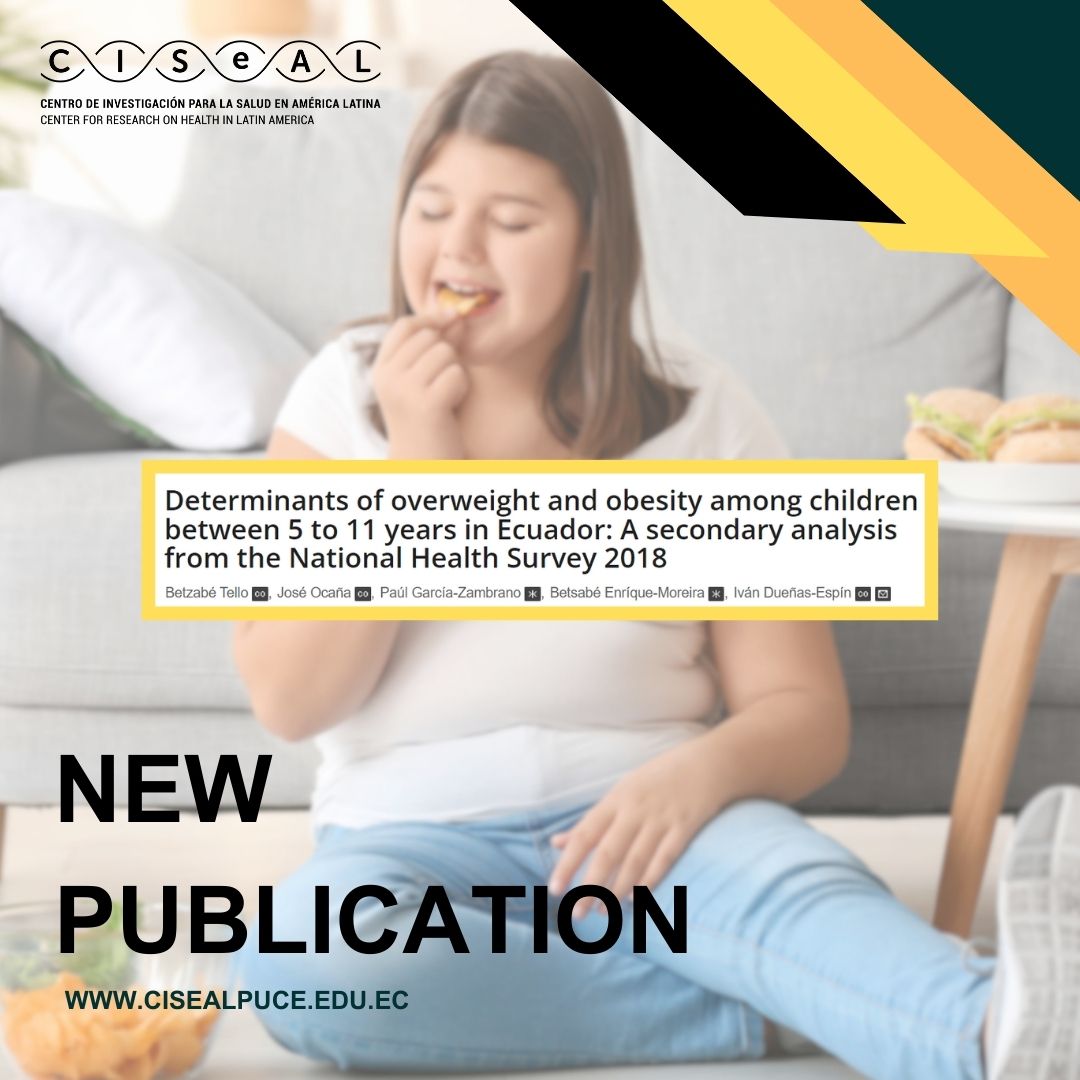 In the last decade, the world has witnessed a worrying transformation in eating patterns, causing an alarming increase in overweight and obesity (OW/OB) rates not only in rich countries but also in low- and middle-income nations. Ecuador is no exception to this trend, facing a reality where one in three children is affected by this problem.
In the last decade, the world has witnessed a worrying transformation in eating patterns, causing an alarming increase in overweight and obesity (OW/OB) rates not only in rich countries but also in low- and middle-income nations. Ecuador is no exception to this trend, facing a reality where one in three children is affected by this problem.
In order to better understand the socioeconomic, demographic and behavioral determinants of overweight and obesity among Ecuadorian children aged 5 to 11 years, our CISeAL researcher, Betzabé Tello, took part in a secondary analysis of data collected in the 2018 National Health and Nutrition Survey.
The study employed a cross-sectional design to analyze the prevalence of OW/OB in 10,807 schoolchildren, using multivariable and multilevel logistic regression models to assess adjusted and unadjusted odds ratios by a series of explanatory variables.The prevalence of overweight and obesity in the age group studied was 36.0%.Males had a 1.26-fold increased risk of OW/OB compared to females.With each additional year of age, the risk of OW/OB increased by 1.10 times.Children from higher economic quintiles showed higher odds of OW/OB compared to those from the lowest quintile.
Larger household size and regular physical activity were associated with lower odds of OW/OB, whereas recognition and use of processed food labels was linked to increased risk.
This study highlights the critical need to develop and implement public policies focused on creating healthy environments and addressing the social, commercial and environmental determinants of childhood overweight and obesity.
We invite you to read the full article at the following link: https://doi.org/10.1371/journal.pone.0296538



